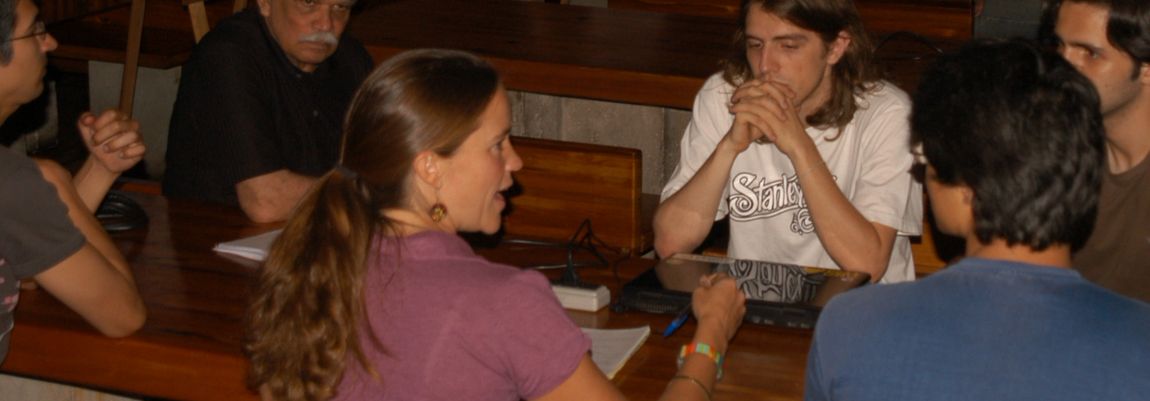On a team, match the right people with the right tasks. What people volunteer to do will often be a good guide, although of course it’s also important to make sure that each person has the skills and experience needed to do the job. Matching new people with more experienced people on the team both ensures the quality of the work and provides on-the-job training.
It’s useful for team members early on to talk to the whole team about what they see as their primary strengths and interests. This not only helps guide the distribution of tasks, but it also makes each person feel valued, it will prompt shy members to contribute, and it will help the more compulsive members to relax, knowing that they don’t have to know or do everything.
If you’re leading a team, try to rotate the toughest and most time-consuming jobs within the group to give people breathers when they need them. Also, delegate authority to others as much as you can. Delegating not only takes some of the load off the leader, but it also builds teamwork: when people know they’re integral to the action, their commitment to the enterprise and to the team grows.
Delegate authority only when it’s clear that the person you’re delegating to has the necessary skills and commitment. Don’t ask the most tongue-tied member of your team, for example, to sub for you in giving a speech to the city council.
Recognize and act early on potential problems within the team. Spend enough time at your first team meeting making sure that everybody understands what he or she is getting into. A brief review is good insurance. It’s like when the pilot announces your destination before they close the main cabin door. I’ve yet to see some red-faced soul bolt for the door—but I’m sure it’s happened.
Especially if you’re in a position of leadership, be on the lookout for the kinds of little frictions and mistakes on your team that can grow into big trouble later on. Is any team member weaker in needed skills than you thought? Are those snide remarks between Terry and Jerry going to build into a nasty fight just when you need people to pull together? Could Simon’s gung-ho optimism lead him to underestimate risks?
If you’re alert for warning signs like these, you or other members of the team can take preemptive actions that will reduce the chances for real problems later on. You might, for example, reassign responsibilities among team members, try to mediate disputes before they get out of hand, or offer a private word of coaching or advice. You maynot end the problems, but by addressing them early, you and the team will at least have a better chance to lessen them and/or compensate for their effects.
Create and communicate a team vision of success. Coach’s Corner #5 and 6 described why visions are important and how to create one. Visions are especially important for teams---there’s a special synergy generated when all team members have put their pictures of intended results into a single vision of what they’ll achieve together. Teams that don’t have a common vision, or whose vision is mushy or incomplete, are more likely to bog down in confusion and conflicts over problems that should be minor.
Your team will work harder and better if it’s guided by a vision that all members have helped create. As members contribute to a team vision---each adding his or her own pictures of success---the vision tends to get stronger and clearer; individuals increase both their sense of responsibility for it and their commitment to attaining it.
Use the visioning exercise described in Coach’s Corner #6 with the team. If you’re leading the exercise, remind everyone that visions are intuitive, not intellectual: to create a vision, team members must give themselves the freedom to imagine what does not yet exist. Urge team members to add to or refine what others have said, and to contribute new pictures. Combine and condense the pictures into a short vision statement that will guide the team’s subsequent planning.
Getting team members to be visionaries isn’t always easy. Some people have never seen themselves in that role and aren’t comfortable with it. If it helps them to relax into it, don’t use the word vision at all---simply ask people to join you in creating “pictures” of what the team wants to achieve: “What does it look like when we’re done?”
You may have to get things started by describing your own pictures of what’s to come. Make those pictures so clear and so compelling that your listeners are drawn into them and can see what you see, hear what you hear, feel what you feel. Communicating your vision this way not only creates a model, but it also encourages people who might otherwise be reluctant to be visionaries, too. Many people will overcome their hesitations when they see you going first. And once into it, they’ll start to feel the same excitement you do, and the process can take off.
Some team members may be so impatient to “get on with the important questions” of strategies and tactics that they will want to roll right by the vision-setting process, especially if time is short. Resist that temptation and you’ll save much frustration and disappointment down the line. Assure the impatient ones that setting goals and strategies is the next step in the planning process.
Successful teams make the investment of time and energy to develop a shared vision, one that’s both a guide for planning and a source of energy and cohesion.
Photo credit: http://commons.wikimedia.org/wiki/File:Working_team.JPG

